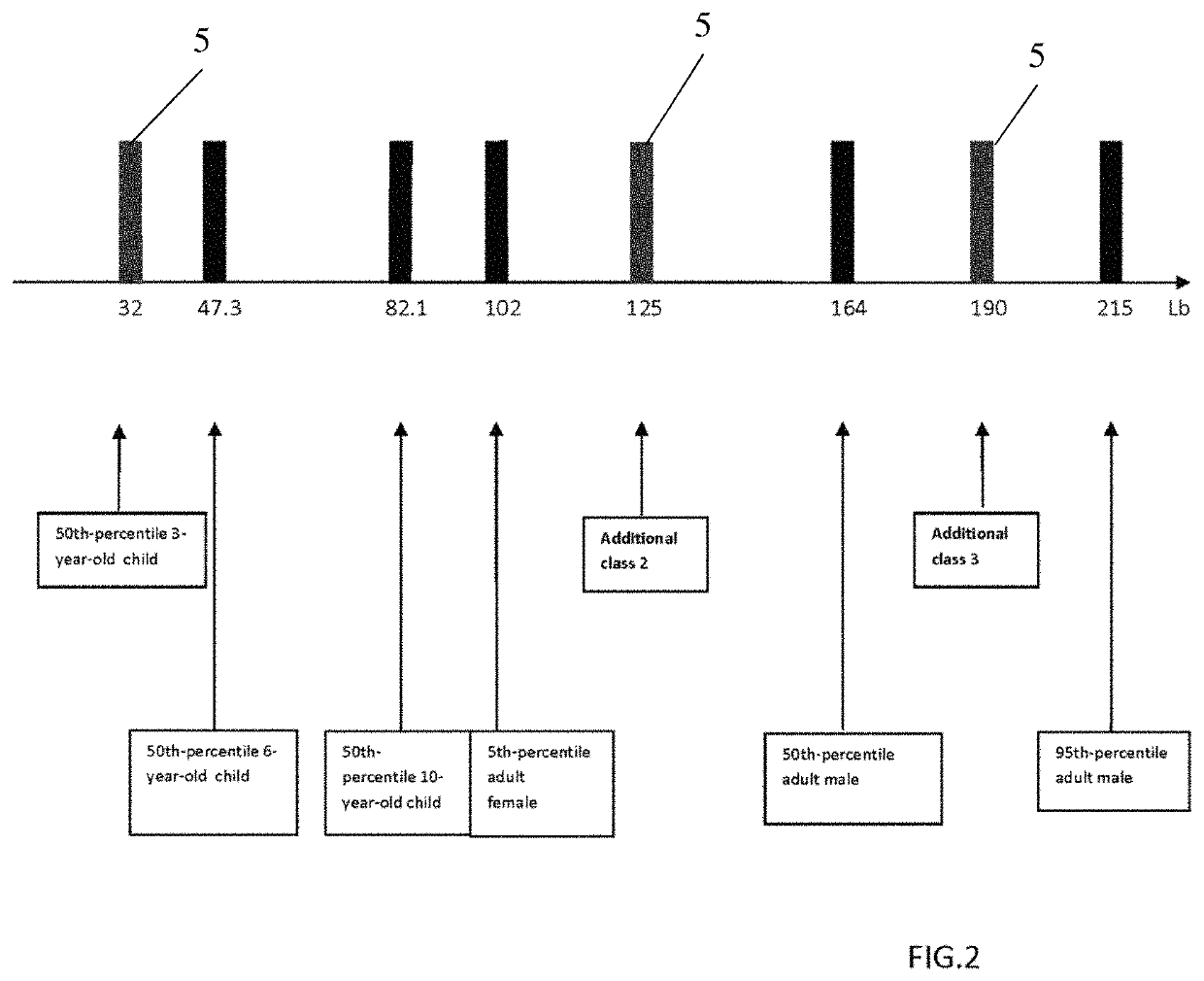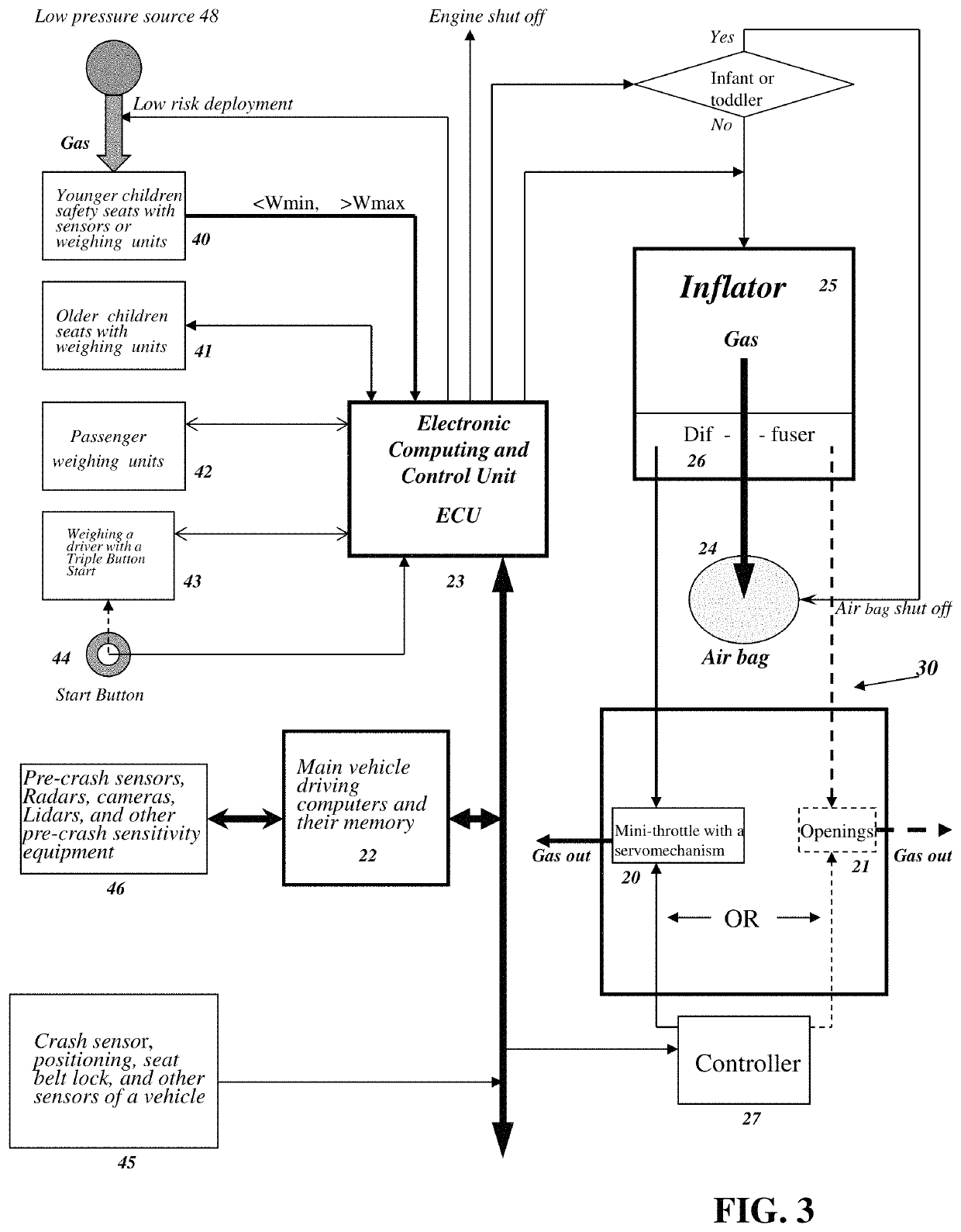Adaptive multi-force safety system (ADMUS)
a safety system and multi-force technology, applied in the direction of pedestrian/occupant safety arrangement, vehicular safety arrangment, vehicle components, etc., can solve the problems of affecting the safety of vehicle occupants, injuries if not working properly, and difficulty in testing self-driving cars, etc., to achieve convenient, accurate weight measurement, and simplify the
- Summary
- Abstract
- Description
- Claims
- Application Information
AI Technical Summary
Benefits of technology
Problems solved by technology
Method used
Image
Examples
Embodiment Construction
[0107]As we could see, all proposed and realized self-driving and autonomous vehicles use the same basic qualities and characteristics for sensing the road and any objects on it to predict the future behavior of other road users in 360 degrees around. The parameters used are: own parameters of a vehicle such as Position (P) (Longitude & Latitude), Speed (S), Heading (H), Acceleration (A), Frequency of Pre-Crash Sensing (F) signals, Path Prediction (Pp) and calculated Position (PO), and also Speed (SO), Heading (HO), Acceleration (AO), Path Prediction (PpO), Size (ZO) of any object on the road, and time interval (To) and a distance (DO) left to the position of the point of the imminent crash with any other object on the road, and the number (No) of the Pre-Crash Sensing attempts left before the imminent crash. If calculation of a Position of the vehicle was made through the Reference Points, the correction by a part of the car's length is needed for calculation of a distance from bum...
PUM
 Login to View More
Login to View More Abstract
Description
Claims
Application Information
 Login to View More
Login to View More - R&D
- Intellectual Property
- Life Sciences
- Materials
- Tech Scout
- Unparalleled Data Quality
- Higher Quality Content
- 60% Fewer Hallucinations
Browse by: Latest US Patents, China's latest patents, Technical Efficacy Thesaurus, Application Domain, Technology Topic, Popular Technical Reports.
© 2025 PatSnap. All rights reserved.Legal|Privacy policy|Modern Slavery Act Transparency Statement|Sitemap|About US| Contact US: help@patsnap.com



